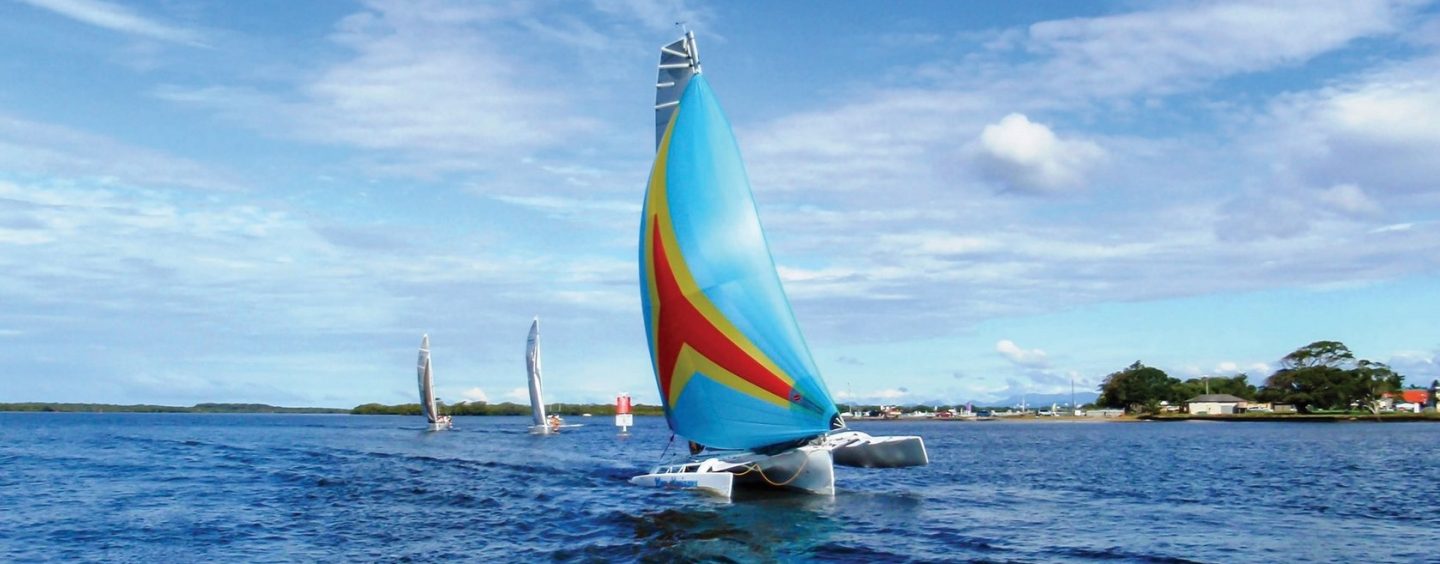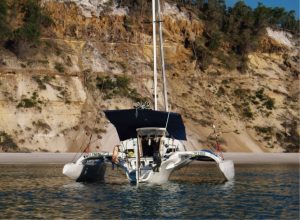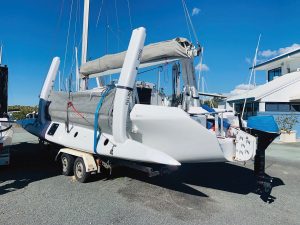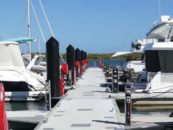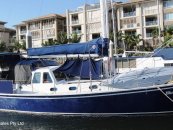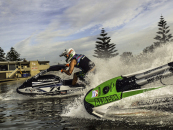By Scott Altman
Setting sail off the pristine beaches of Queensland, the dreams of those on board a sleek Wavelength 780 become reality.
Through the combination of extensive experience as a long-time sailor and designer, Robert Forster created the distinct folding trimaran. This unique multihull boat has pushed the boundaries in trailerable trimaran design and creation.
THE CREATION OF THE FIRST WAVELENGTH 780
The first Wavelength design was the culmination of Forster’s long-standing personal and professional relationship with trimarans. A young Forster held an intense interest in sailing that sparked his long history of cruising, racing, and even building trailerable multihulls. This eventually led him to an employment opportunity at OSTAC (Ocean Sailing Trimarans & Catamarans). Here, Forster accumulated comprehensive knowledge on the construction and techniques needed to craft numerous types of modern multihulls.
Fast-forward to semi-retirement, and the plan for a new trailerable trimaran started to take shape. This boat was to provide a high-quality cruising experience, while experimenting to tackle a realm of new possibilities. Forster was aware of the various limitations of trailerable trimarans. So, he aimed to create a design that was accessible for home builders and easily transportable.
Popular foam sandwich methods did not seem feasible for Forster when he was considering making a boat. These methods are often highly technical and expensive. So, by innovating a blend of cold-moulded ply and foundations of foam-sandwiching, Forster was able to build the structurally strong, yet surprisingly lightweight Wavelength 780.
Furthermore, Forster settled on a 7.5-8.5 beam width with high-beam clearance to allow for smoother sailing and increased storage space for longer travels. Then, by drawing from Ian Farrier’s vertical folding system, the floats were made to be easily folded in towards the main hull. This allows Wavelength Trimarans to be easily launched and retrieved from a trailer.
WAVELENGTH NO.2 – NEW HORIZONS
Those lucky enough to sail a Wavelength are rewarded with exceptional cruising capabilities and high performance for racing despite its size range.
Ted Kerre is one of those fortunate few. Drawn in by its stylish and innovative design, and without the budget to purchase a pre-built tri, he set out to build his own. That became the catalyst for the creation of the Wavelength 780 No.2 – New Horizons – a trailerable trimaran that would be used by Kerre for many years to sail the open Queensland waters with his wife and friends.
Kerre is a long-time friend of Forster. They had both been involved in a local Queensland sailing group in the 1990s and skippered the same type of boat – a Farrier Trailertri 720. This is the same boat that later inspired Forster’s float folding system. So, when it was time for Ted to get a new boat, he decided to use Forster’s Wavelength design.
Kerre stated, “I liked the size and shape of the design of this boat. And as I couldn’t afford to purchase a trailer trimaran already built, I decided to build this one myself. After working every weekend – except Christmas and Easter – and 4000 hours later, I launched New Horizons.”
New Horizons has carried Kerre and his wife on some amazing journeys over the years. It is currently used mainly for cruising, noting that “even in light winds, the boat sails quite comfortably at seven to ten knots.” However, it also served them well as keen competitors in numerous local races around Queensland and Moreton Bay. Proudly boasting the signature Wavelength flag, New Horizons has achieved some impressive victories. This includes winning the 2013 Queensland Winter Multihull series, and placing second in the OMR division of the Bay to Bay Race in 2014.
Most recently, New Horizons has served as the perfect trimaran for exploration, including weekend trips throughout Southeast Queensland, such as their Easter trip from Shorncliffe to the Gold Coast. Kerre shared, “We left early on Friday to watch the start of the Brisbane to Gladstone race. Soon after, we headed down to the Gold Coast in excellent conditions, arriving at Labrador at 10.30 PM. Saturday, we dug yabbies, fished and went out for dinner in the evening. Sunday, we sailed up the Canaipa Passage back into Moreton Bay to stay the night at Little Ships anchorage before heading back the next day. The sunset was quite a picture as Peel Island was on fire.”
Kerre’s Wavelength, as well as many others, host stories of perseverance, creation, and sailing in the Queensland sea. Although the future of these amazing boats remains unknown, they truly capture the essence of the sailor’s spirit – a design that inspires many voyages to new horizons.
Published in print July-September 2022






















